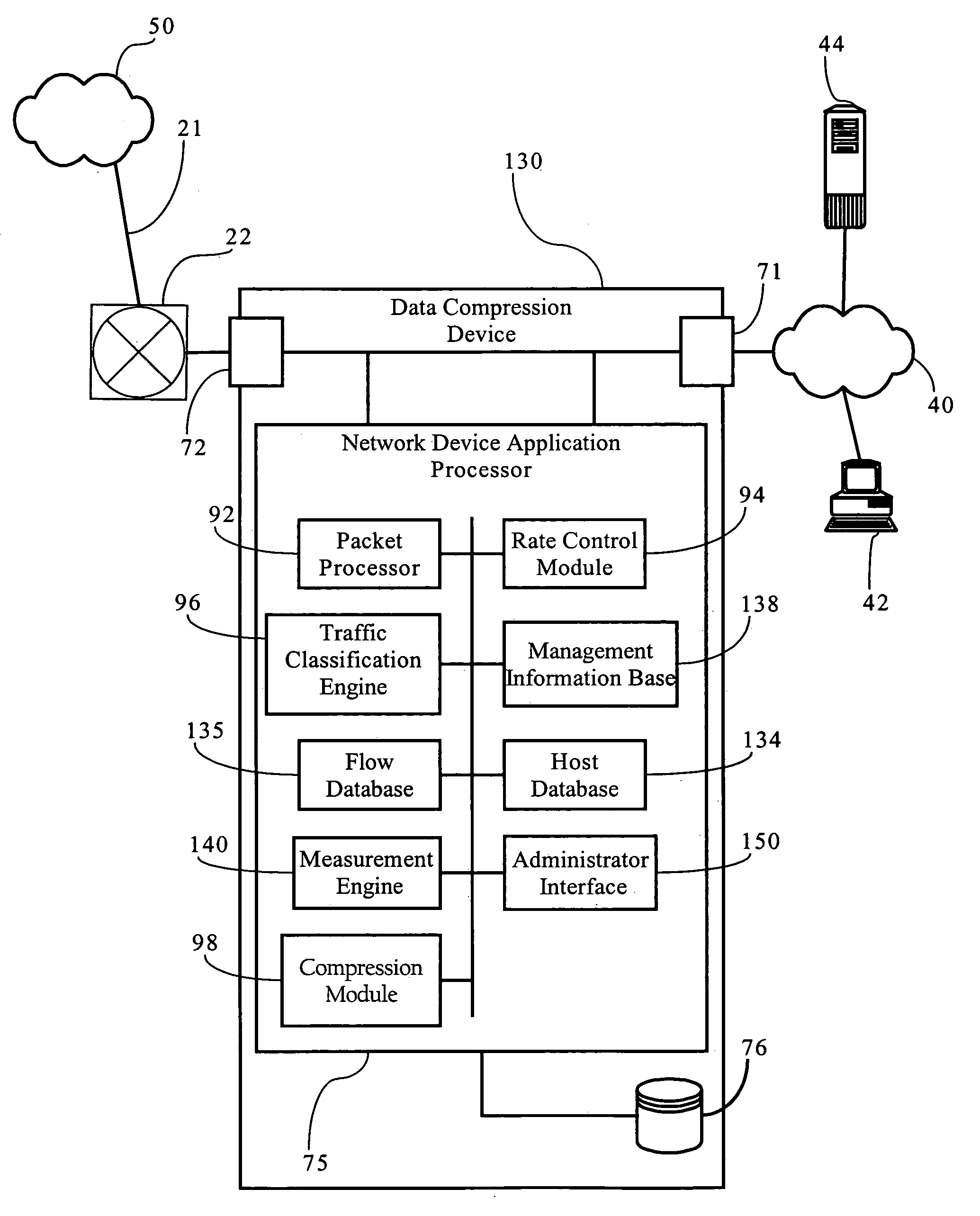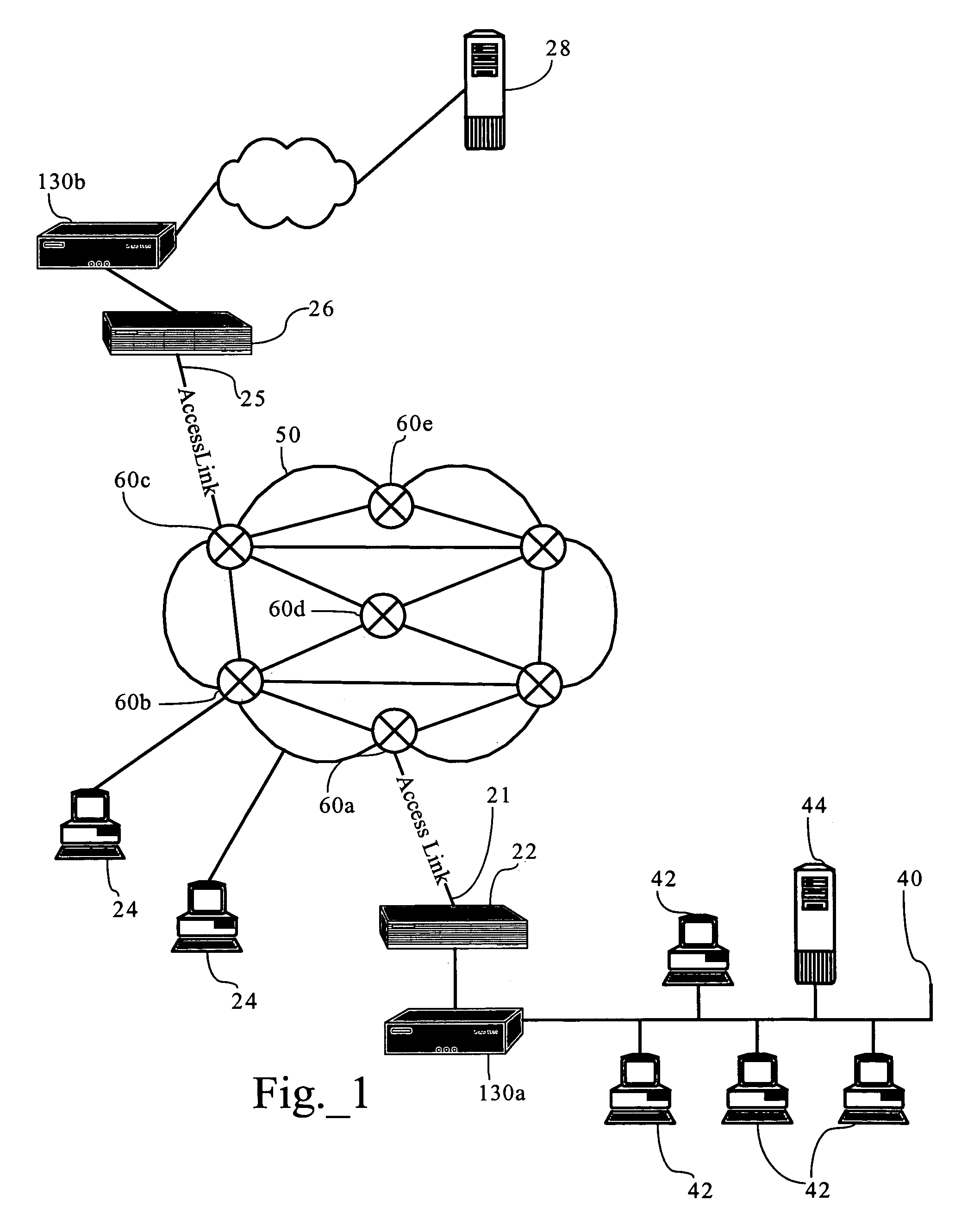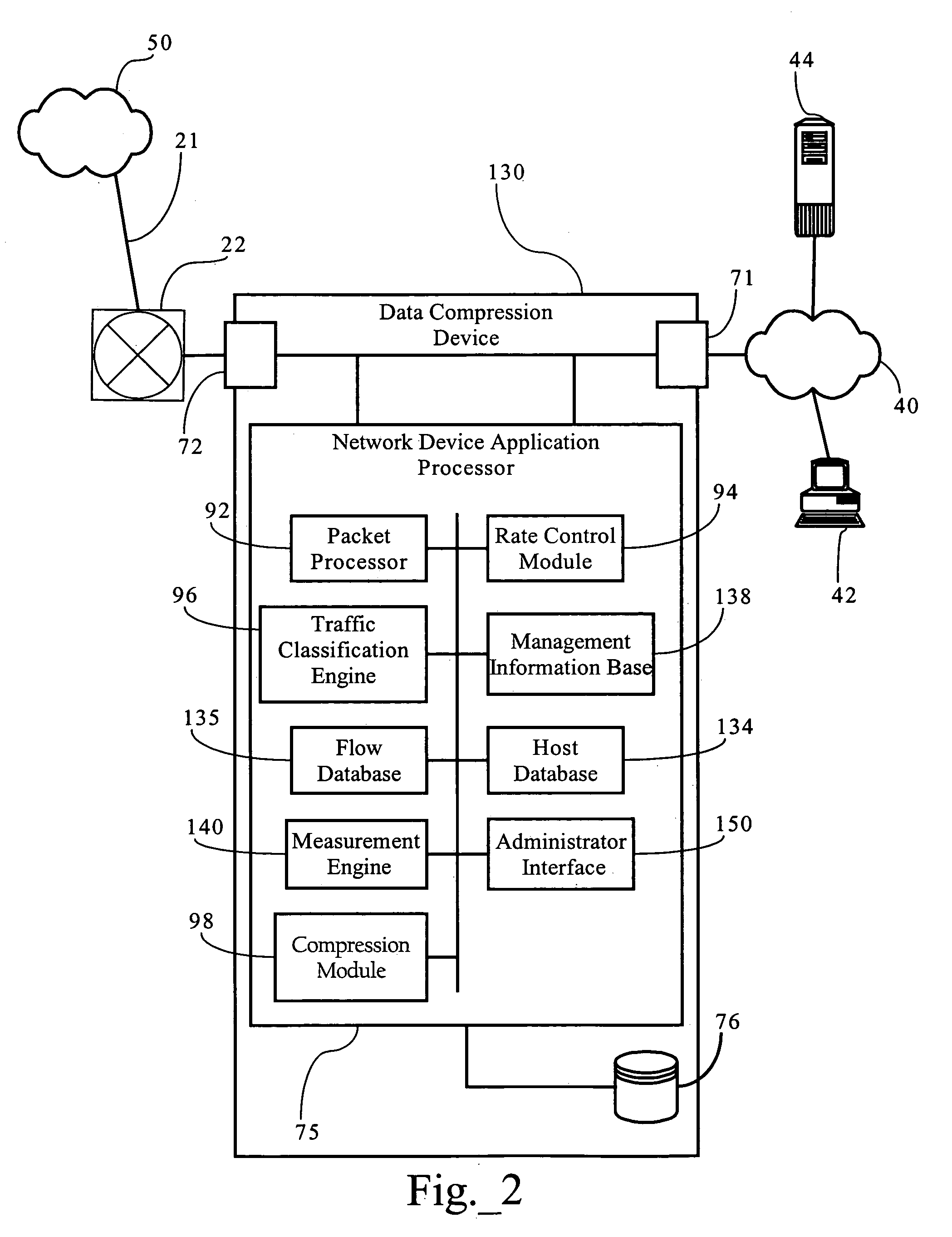Adaptive control of codebook regeneration in data compression mechanisms
a data compression and codebook technology, applied in the field of data compression, can solve the problems of affecting the performance of business applications, higher cpu costs, computationally intensive operations, etc., and achieve the effect of reducing the effect of data throughput and no resulting gain in data throughput or performan
- Summary
- Abstract
- Description
- Claims
- Application Information
AI Technical Summary
Benefits of technology
Problems solved by technology
Method used
Image
Examples
Embodiment Construction
)
[0044]FIG. 1 illustrates a packet-based computer network environment including data compression devices 130a, 130b. As FIG. 1 shows, local area computer network 40 interconnects several TCP / IP end systems, including client devices 42 and server device 44, and provides access to resources operably connected to computer network 50 via router 22 and access link 21. Server 28 is a TCP / IP end system connected to computer network 50 through router 26 and access link 25. Client devices 24 are additional TCP / IP end systems operably connected to computer network 50 by any suitable means, such as through an Internet Services Provider (ISP). The computer network environment, including computer network 50 is a packet-based communications environment, employing TCP / IP and other network protocols and has a plurality of interconnected digital packet transmission stations or routing nodes 60a–60e. As FIG. 1 shows, data compression device 130a is provided between router 22 and local area computer n...
PUM
 Login to View More
Login to View More Abstract
Description
Claims
Application Information
 Login to View More
Login to View More - R&D
- Intellectual Property
- Life Sciences
- Materials
- Tech Scout
- Unparalleled Data Quality
- Higher Quality Content
- 60% Fewer Hallucinations
Browse by: Latest US Patents, China's latest patents, Technical Efficacy Thesaurus, Application Domain, Technology Topic, Popular Technical Reports.
© 2025 PatSnap. All rights reserved.Legal|Privacy policy|Modern Slavery Act Transparency Statement|Sitemap|About US| Contact US: help@patsnap.com



